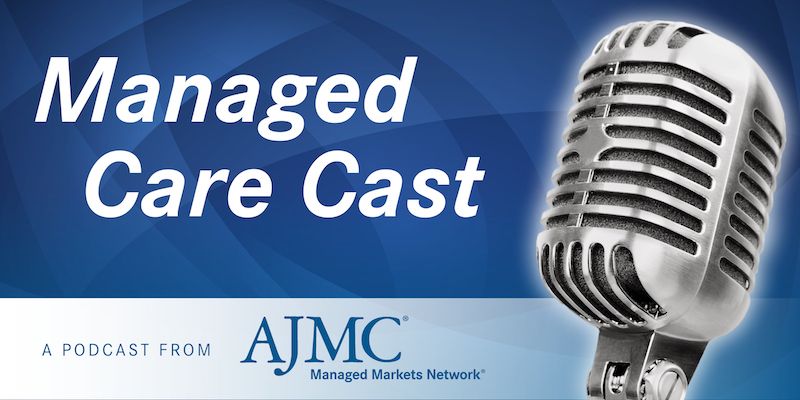Video
Acute and Preventive Treatment: Differences and QOL Impact
A discussion on the differences between acute and preventive migraine treatment, and the impact of treatment on quality of life.
Transcript:
Neil Minkoff, MD: Hello, and welcome to The American Journal of Managed Care® program entitled, “Acute and Preventive Therapies for Migraine.” I am Dr Neil Minkoff, the CEO of FountainHead Healthcare in Sudbury, Massachusetts. Joining me today in this virtual discussion are my colleagues. Dr Stephanie Nahas is the Director of the Headache Medicine Fellowship program, and associate professor in the Department of Neurology at Thomas Jefferson University in Philadelphia, Pennsylvania. Dr Kevin Stephens is the chief medical officer of the mid-South region for UnitedHealth care in New Orleans, Louisiana. Dr David Dodick is a professor at the Department of Neurology at the Mayo Clinic in Phoenix, Arizona.
Today, our panel of experts will be reviewing the differences between acute and preventive treatment of migraine. We’ll discuss the clinical guidelines and treatment options for migraine prevention and discuss appropriate treatment selection for migraine patients. With that, let's begin.
I'd like to get started by differentiating between acute and preventive migraine treatments. What are the number of episodes, and what else you are looking for, when you start to treat that, Dr Dodick?
David W. Dodick, MD: Neil, acute treatment refers to on-demand or as-needed treatment after symptoms have already started. The objective of acute treatment or as-needed treatment is to terminate the symptoms of the attack as quickly as possible and prevent their recurrence. Preventive treatment is treatment given on a scheduled basis. If it's taken orally, it's usually taken every day. If it's by injection, it's usually used once a month or once every 3 months. That injection can be either subcutaneous or intravenous.
Those are scheduled, because the objective is to drive down the frequency of attacks. The goal is to reduce the frequency or prevent the attacks from even starting. What we are looking for there is not only a reduction in the frequency of attacks, but also a reduction in the severity and duration of attacks. They are 2 very different treatments. Some patients require preventive treatment. Almost all patients will require acute treatment.
Neil Minkoff, MD: What are the big issues that we talk about as we're thinking about a chronic condition like migraine and looking at its treatment? What does migraine do to a person's quality of life? Dr Nahas, could you comment on this?
Stephanie J. Nahas, MD, MSEd, FAHS, FAAN: Sure. Migraine is a disease that's defined by these recurrent attacks of head pain, as well as other symptoms which can be just as impactful as the pain itself. There's often sensitivity to light, noise, odors, or other things in the environment. There is nausea, and even vomiting, associated with the attacks. The pain can get worse with moving around or performing day-to-day activities.
When you think of an attack of migraine, it can be quite impactful. What makes it worse for people with migraine is that many times, they can't predict when they're going to have 1 of these disabling attacks which may have a 50% chance of knocking them completely out for the day. They have to be in bed, in a dark, quiet room. No one can bother them. They can barely take care of themselves. During a migraine attack, a person can be as disabled as someone who has acute schizophrenia or even quadriplegia because of the debilitating nature of the symptoms. When you consider the unpredictability of the disease, that adds another layer of anxiety on the part of the person with the disease. Many people with migraine, particularly when their attacks are disabling or fairly frequent, are always on edge. They're afraid of when the next attack is going to rear its ugly head to prevent them from going to a birthday party, graduation, wedding, or some other very important event. It interferes with their career trajectory, whether they’re trying to get a promotion at work or succeed in school.
Migraine affects children and teenagers, as well as adults. It peaks at the age of the 20 to 30 years. It affects women disproportionately, compared with men. It is 3 times more common in women. It has a huge impact on the household. About 25% of households have someone with migraine. Often times, that's the matriarch of the household. Many women these days have careers of their own and they can be derailed by this devastating disease. It’s difficult to live with that and then choose how it's going to be managed with medications which may or may not be fun to take. They may or may not be effective, and it puts a huge burden on a person with migraine.
Neil Minkoff, MD: It's very striking, and clearly very important.
Newsletter
Stay ahead of policy, cost, and value—subscribe to AJMC for expert insights at the intersection of clinical care and health economics.




